Get The Visibility Your Company Needs
Reduce compliance risks and mobility costs while managing individual and project-related travel with ImmiSMART: the solution that unifies your travel and mobility programs.
Taiwan Immigration Services
Newland Chase offers full support with all aspects of corporate immigration to Taiwan. Please find an overview of the typical corporate immigration processes below. Every situation is unique, so please do get in touch, either through your usual Newland Chase contact or using the details on the right hand side of the page. Our immigration experts will be glad to discuss your needs in greater detail.
Immigration Summary
A work permit is the immigration process for foreign national specialists and managers hired in or transferred to Taiwan; or fulfilling a service contract for more than 90 days. Note that the Taiwanese entity must meet certain capital/sales requirements.
If the duration of assignment is over six months, a resident visa (and visas for dependent family members) should be applied for at the Taiwanese diplomatic representative office in the country of the applicant’s origin or nationality.
The applicant must be coming to Taiwan to carry out specialised or technical work, OR to act as director/manager/executive of a business invested in or set up by overseas Chinese or foreign nationals.
The Taiwan sponsor must have annual sales of at least NT$10 million or, if the sponsor has been incorporated for less than a year, must have at least NT$5 million registered capital. To obtain a work permit for a foreign manager or executive, or for fulfilment of a service contract, these company financial qualifications are not required.
The work permit for contract fulfilment is the appropriate immigration process for a foreign national who has been assigned to Taiwan to fulfil a signed construction, sales, or technical cooperation contract for a period of more than 30 days. If the working period is less than 90 days within one year, there is no restriction on salary, qualifications or experience, and no need for translated or legalised diplomas or letters of experience. Additionally, there is no need to obtain a resident visa or an Alien Resident Certificate (ARC).
A work permit is not required for applicants going to Taiwan for business activities, including fulfilment of a service contract between the sending company and the Taiwan company, for a period of up to 30 days.
Chinese-national executives or managers or technical experts with at least one year of employment in a multinational corporation, transferring within the same group of companies to Taiwan, but remaining on home-country contract, can obtain a renewable, single or multiple Entry and Exit Permit (EEP), usually valid for one year.
Qualifying "foreign special professionals" can apply to the National Immigration Agency for a 4-in-1 Employment Gold Card, valid for 1-3 years, which includes work permit, resident visa, Alien Resident Certificate and re-entry permit. The application can be submitted by an employer, an agent or the applicant themselves (with or without an employment contract). Qualifying foreign special professionals with first-time approval to work in Taiwan can, for three years, enjoy the tax benefit of having the portion of their salary income above NT$3 million counted at half its amount for assessment of income tax.



